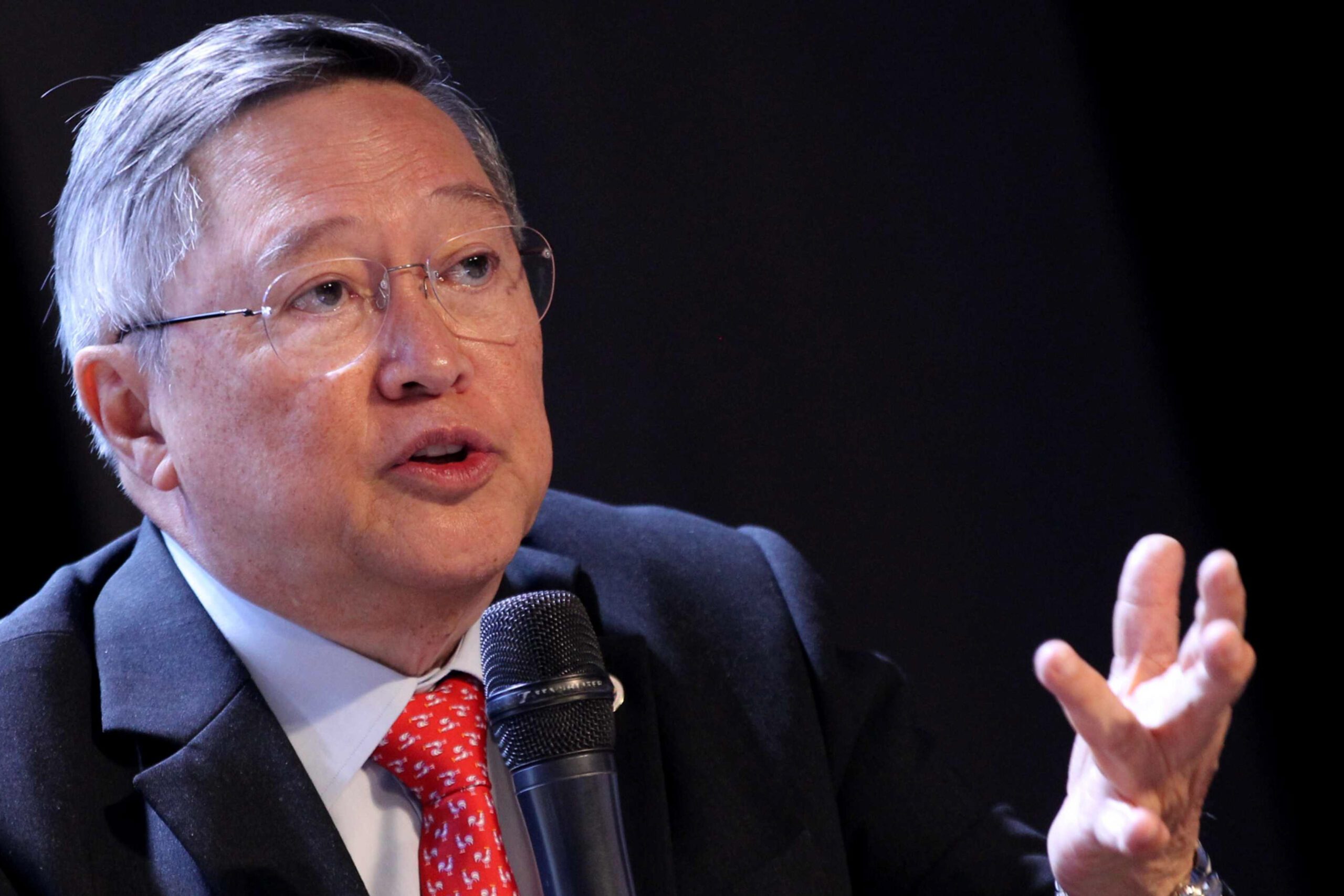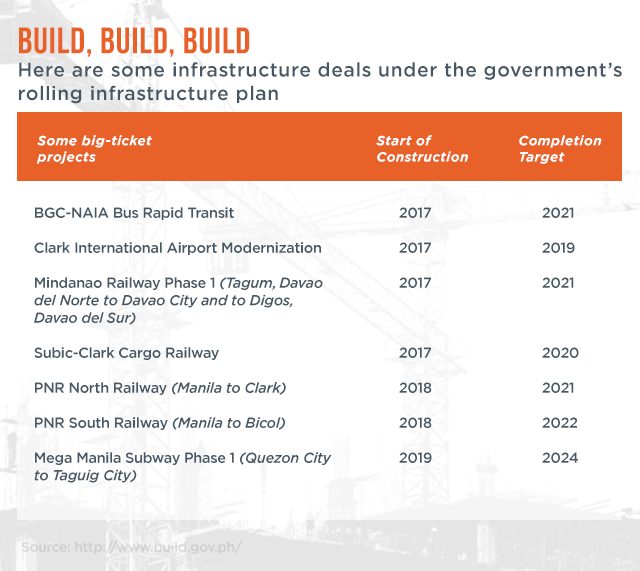SUMMARY
This is AI generated summarization, which may have errors. For context, always refer to the full article.

MANILA, Philippines – Almost a year into his administration, President Rodrigo Duterte and his economic team pledged to spend trillions of pesos until 2022 to restore the country’s crumbling roads and bridges, glitch-ridden trains, as well as airports that seem to be behind the times.
The government’s rolling infrastructure plan will include the country’s first subway, Mindanao’s first mass transit railway, the development of Clark Green City, and another commuter railway linking Tutuban, Manila to Clark, Pampanga.
Other projects are the Bonifacio Global City to Ortigas Road Link Project, Mandaluyong Main Drainage Project Phase II, and Cebu Bus Rapid Transit, among others.
“Our program of infrastructure build-up will entail trillions in economic investments. We need to undertake these investments for the sake of the next generation of Filipinos – or else they will remain in the same poverty trap that we found ourselves in,” Finance Secretary Carlos Dominguez III said during the forum on “Dutertenomics,” which the President’s economic managers pitched as their plan to transform the Philippines into a high middle-income economy by 2022.
Mindanao Railway, Mega Manila Subway
The P32-billion Mindanao Railway Phase 1 is a new project to be implemented by the Duterte administration, while most of the deals have already been started under the previous government.
New Clark City, which was started during the Aquino administration, will also be completed within Duterte’s term. Bases Conversion and Development Authority (BCDA) chief Vince Dizon said this will house government agencies’ headquarters, a food processing terminal, a hospital, an international food market, housing, and an agro-industrial park. (READ: DOTr moving main office to Clark in July)
For the Mega Manila Subway, Tugade said the official development assistance (ODA) financing is hoped to be signed when Japanese Prime Minister Shinzo Abe comes to the Philippines in November for the Association of Southeast Asian Nations (ASEAN) Leaders’ Summit and Related Summits.
“There is no single project or system that will completely eradicate the country’s traffic problems. It is a basket of solutions. These [projects] are very ambitious. Give us your trust and prayers and we will build, build, build,” Transportation Secretary Arthur Tugade told reporters on the sidelines of the forum in Pasay City on Tuesday, April 18.
Here are some of @DOTr_PH ‘s projects part of #BuildBuildBuild thrust @rapplerdotcom pic.twitter.com/MsWZYcQ9jC
— Chrisee V. Dela Paz (@chriseedelapaz) April 18, 2017
The transportation chief said these big-ticket projects should be finalized this year so many would be completed before Duterte’s term ends in 2022.
“In the decades when we neglected our infra while our neighbors rapidly built up theirs, we lost out on competitiveness. For an archipelagic country, poor infrastructure is debilitating,” Dominguez said.
He added that this raises the costs of transporting goods between islands. “That is the reason our food price regime is high. Our congested roads and ports discouraged investors who need to operate on just-on-time deliveries. Our high power costs and unstable supply discouraged investments in manufacturing.”

Veering away from PPP
According to Dominguez, the administration is veering away from the public-private partnership (PPP) thrust, which he said had cost delays in most badly-needed infrastructure projects.
“Projects will be financed by our taxes, ODA funds, and commercial loans. We plan to start projects ourselves then bid out operations and maintenance once completed,” he added.
The Duterte administration is planning to call off the PPP auction for the South Line of the North-South Railway Project (NSRP) or now known as the PNR South Railway, and instead finance the project through ODA.
It was in July 2015 when the administration of former president Benigno Aquino III started inviting interested bidders to participate in the auction for the project. The Aquino administration even targeted to award the railway PPP deal in March 2016, but the project did not move forward.
Another project that was previously in the PPP pipeline is the Mega Manila Subway. Tugade said during the forum that the P227 billion will be financed through ODA and funds from the national budget.
Meanwhile, the 24.61-kilometer arterial road that will link the North Luzon Expressway (NLEX) to the Philippine-Japan Friendship Highway in San Rafael, Bulacan – known as the Plaridel Bypass Road – is also funded under a loan agreement between the Philippine government and the Japan International Cooperation Agency (JICA).
“If we examine all the reasons why the Philippines fell behind the other economies of this dynamic region, it has much to do with poor infrastructure. It is here where we should begin rebuilding our competitiveness,” Dominguez said. – Rappler.com
Add a comment
How does this make you feel?
There are no comments yet. Add your comment to start the conversation.